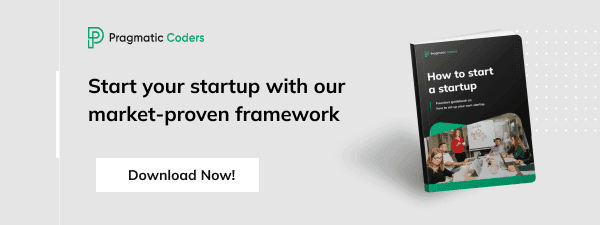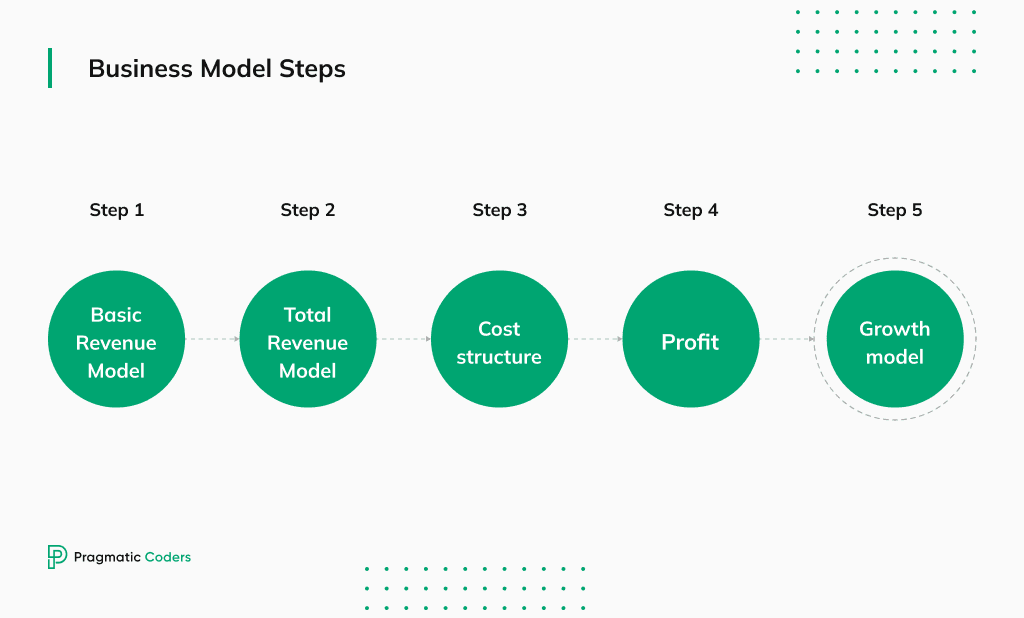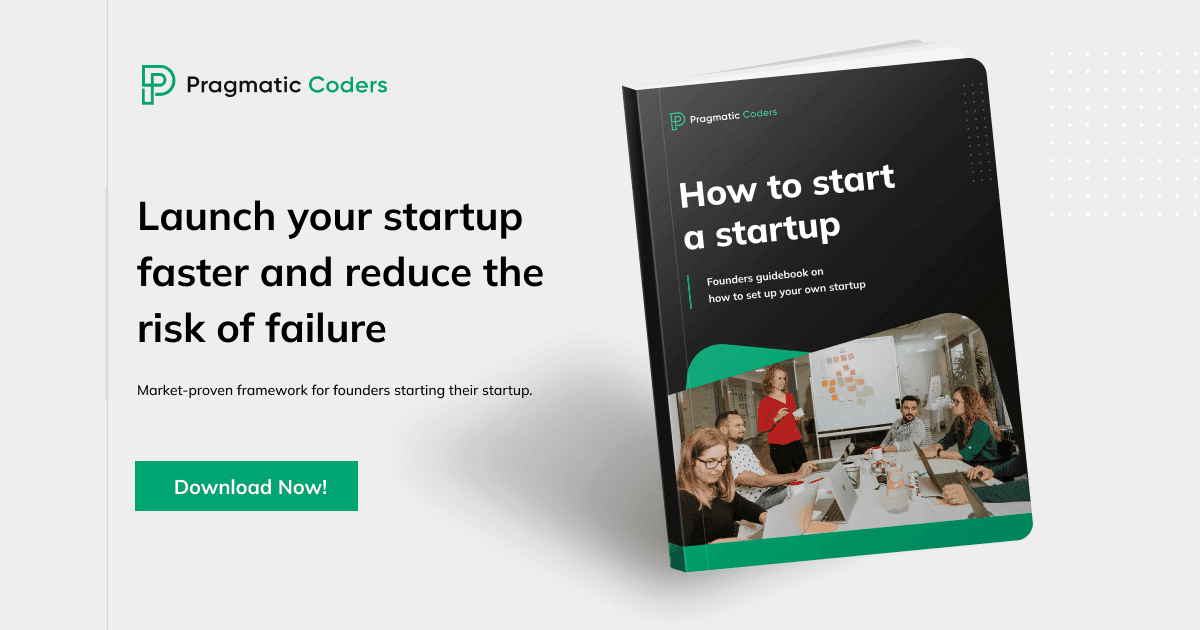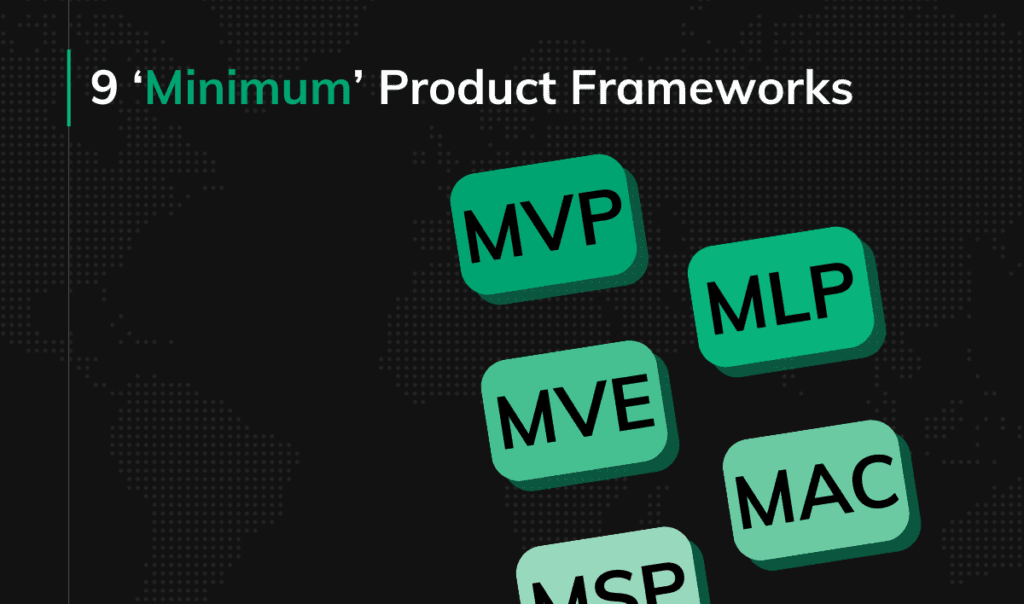How to start a startup? A comprehensive guide [+EBOOK]
![How to start a startup? A comprehensive guide [+EBOOK]](https://www.pragmaticcoders.com/wp-content/uploads/2024/03/Okladka-blogposta.png)
We’ve seen many success stories. Startup founders dream of becoming another Steve Jobs. Still, over 90% of startup companies go bankrupt.
The top 3 reasons startups fail are lack of money, no market need, and getting out-competed. It’s common knowledge. Yet, too many startups develop products nobody wants and spend extra money and time fixing them. Why does it happen?
In this article, you’ll learn how to start a startup. We’ll show you:
- how you can research the market and competition to find your niche;
- how you should approach the process of discovering and validating your business ideas to choose the most promising one;
- how you can prepare yourself for presenting your business idea to potential investors to raise money.
Read on & learn how to set up your own business successfully 👇
📌 This is a summary of our ebook titled How to start a startup. It contains many more examples, pro tips, and expert insights. Be sure to download it!
What is product discovery?
Product discovery is the ongoing process of understanding what users need, validating solutions, and making informed product decisions throughout a product’s lifecycle. This includes deciding what to build, how to build it, and how to improve it.
It’s important to note that product discovery consists of two main phases:
- Problem: This phase focuses on understanding user needs through various methods like user research, market analysis, and competitor research. The goal is to identify the problems, pain points, and frustrations that your target users are facing.
- Solution: Once you have a deep understanding of the problem, this phase involves ideating, prototyping, and testing potential solutions. This is where you brainstorm ideas, create low-fidelity prototypes, and gather user feedback to validate your solutions and ensure they truly address the identified problems.
How to start a startup? Process overview
Before we dive deep into the topic, let’s briefly summarize what the startup-building process is all about and what your mindset as a business owner should look like.
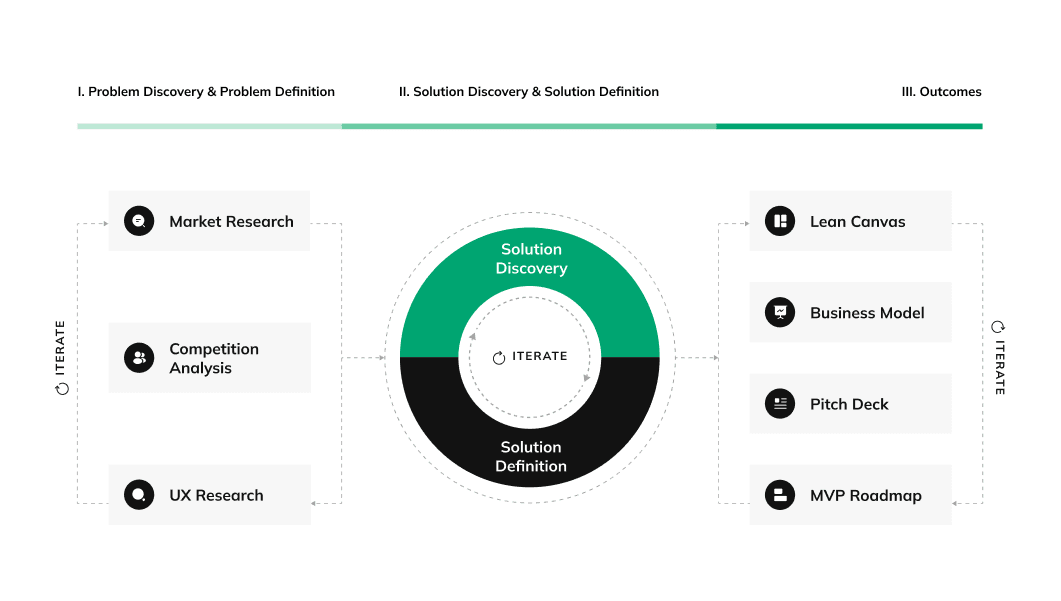
- The process described below consists of three main components we at Pragmatic Coders call: Problem discovery & definition, Solution discovery & definition, and Outcomes (see the infographic above). Each of these components divides into smaller segments, e.g., Outcomes include creating the Lean Canvas for your startup, calculating the business model, designing pitch decks, and crafting your MVP roadmap.
- The process is iterative. Each component can and should be repeated many times for the best effects. For example, you might need to go back to your pitch deck and alter it many times as your startup grows and changes. Or, you might need to conduct additional competitor analysis to learn more about your competitive landscape.
Problem discovery & definition. Research the market to find your niche
First, you need to start with the PROBLEM. What is the problem you want to solve with your product? You need to find a thing that makes people’s life hard to the extent they can be willing to pay for a solution. To do this, you need to analyze the market to check
- What people struggle with,
- Whether anybody has already come up with a solution to these struggles.
Competition analysis

Knowing your rivals, their history, the challenges they are facing or were facing in the past, and how their growth looked like is essential to understanding the industry you want to enter, finding your target market, and identifying USP (unique selling points).
We’ll go over the three steps of successful competitor analysis:
- identifying your competitors,
- gathering information about your competitors, and
- analyzing your position in the market.
Why should you carry out a competitor analysis?
Conducting a competitor analysis allows a company to gain insights into the competitive landscape, identify opportunities to differentiate its products or services, and better understand its customer base and industry.
By analyzing its competitors, a business can identify its unique selling proposition and use this information to create a competitive advantage. Regularly conducting a competitor analysis can also help a company track its progress and adjust its marketing efforts.
STEP 1. IDENTIFY YOUR COMPETITORS
Types of competitors
Competitors can be divided into several categories: direct competitors offer the same products or services and target the same audience.
Indirect competitors meet the same demand as you but offer different products or services; potential competitors are in the same market but not yet in the same market area.
Future competitors are likely to enter your market in the following years, and replacement competitors sell a different product or service but may still compete for your customers’ spending.
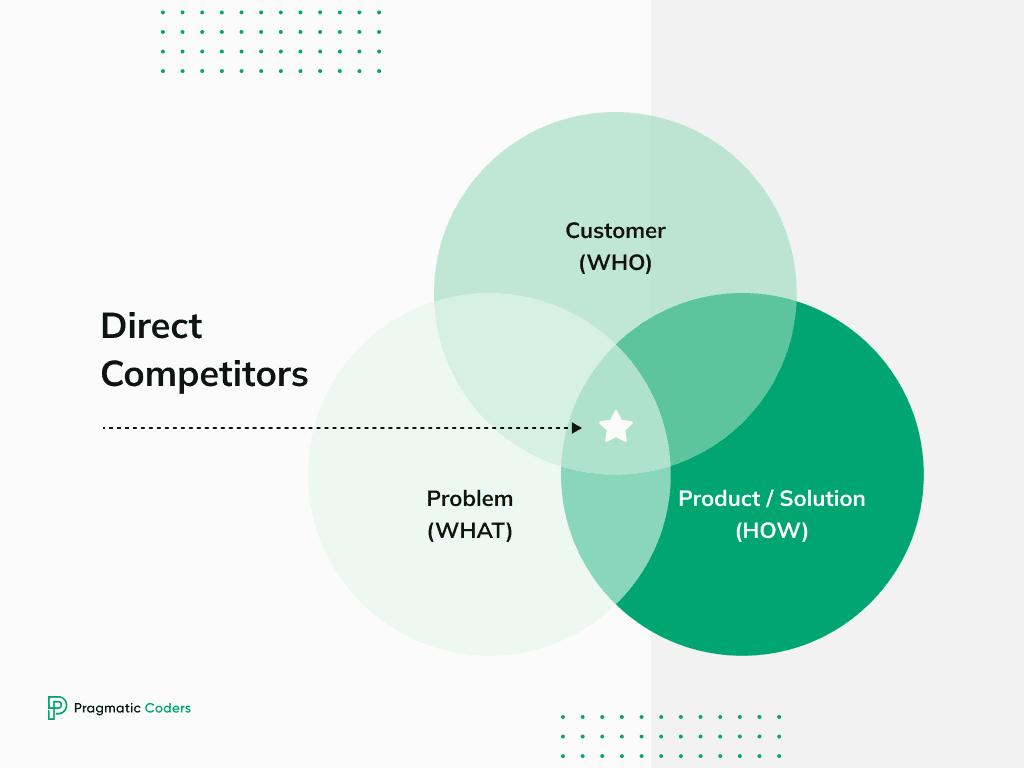
Where can I find my competition?
There are several places to find competitors for competitive analysis, including search engines, app marketplaces, similar product lists, review portals, and startup databases. AlternativeTo, ProductHunt, Slant, G2, and Capterra are all websites that can be useful in identifying competitors and gathering information about their offerings.
In addition to online research, it is also helpful to talk to customers and industry experts or attend trade shows and industry events.
It is essential to remember that competitors can come from any industry and may not always be obvious, so it is vital to be thorough in the search process.
STEP 2. GATHER INFORMATION ABOUT YOUR COMPETITORS
Gathering information about competitors’ online presence involves analyzing their SEO (search engine optimization) strategy, social media, and email marketing efforts.
There are several tools available for each of these areas, including Similarweb or Semrush for SEO, and SocialBlade, SocialTracker, and Owletter for social media platforms and email marketing. These tools can provide information about a competitor’s website performance, keyword rankings, social media followers and engagement, and email marketing strategy.
It is important to gather as much information as possible to understand how competitors reach and engage with their customer base.
STEP 3. ANALYZE YOUR POSITION IN THE MARKET
The third step in analyzing a company’s online competitiveness is to benchmark yourself against competitors. This can be done using a competitive analysis template that includes information about a company’s clients, social media channels, website performance, and general strengths and weaknesses.
Another tool that you can use is a brand perception map, which measures how clients perceive certain brands by plotting them on two axes based on evaluative adjectives.
A product feature comparison table can also help compare the features of a company’s products with those of its competitors to identify unique selling points and areas for improvement.
💡 How to Conduct a Competitor Analysis for Your Startup [BLOGPOST]
Market research

You already know who you’re competing with; now it’s time to discover and analyze your potential customers.
Before you even start to analyze the market, you must learn the different types of research to know what to choose from. Below I’ll explain the main types: primary and secondary research.
Know your audience. Primary and secondary research
Primary research involves gathering original data rather than using previously collected information. With primary research, you can collect data through various methods, such as interviews, surveys, focus groups, and observations.
This type of research is useful when pre-existing data is unavailable or a first-hand account of a situation is needed. However, it can be time-consuming and costly to conduct primary research, which is why some organizations may opt for secondary research, which involves gathering information from already published sources.
Secondary research can be divided into two categories: internal desk research, which involves analyzing internal reports and data, and external desk research, which involves studying information from external sources.
Secondary research resources
When conducting secondary research, you should explore various sources to gain an overview of patterns, trends, and market sizes. This can include industry experts’ statements, social media content, law regulations, and forum threads.
There are many online sources you can use for your desk research. A great way of getting useful data is by searching through online databases. Examples of such websites include Google Scholar, Forrester, Gartner, Eurostat, World Bank, Our World in Data, OECD Stats, and Statista.
💡 How to Do Desk Research for Your Startup [BLOGPOST]
How to measure your startup’s market
Once you’ve gathered all the necessary information, you can measure your market’s potential.
To make sure that your startup has a real shot at success, it’s essential to assess the market size metrics: total addressable market (TAM), serviceable addressable market (SAM), and serviceable obtainable market (SOM). By using these three metrics, you can accurately gauge if your assumptions are realistic.
TAM is the total number of people or companies who could buy a product or service from all vendors on the market worldwide.
SAM is a portion of TAM and represents the total sales volume of a product that all vendors in a territory can sell.
SOM is the number of people or companies that can buy a specific product within the territory that your startup can service.
How can I calculate TAM, SAM, and SOM?
Top-down
The idea is simple. First, you must define the size of your TAM (based on available data). Once you have the number, you go down to SAM and SOM by removing the evaluation of the markets you can’t service. This method is more manageable but also less accurate because you rely on public data sources and your assumptions.
Bottom-up
This strategy will give you a more accurate TAM representation as it involves more calculations. You start with the basic information about your business. Use your previous sales data if you’ve already generated some sales. If you haven’t, you’ll have to do with estimations; the word potential is the key here. Think about:
1. The number of potential customers;
2. How much are potential customers willing to pay for your product?
This method is far from perfect, but if you’re a young startup with no users and no data, estimation is all you have. Based on the information, you define the potential volume of your future sales (your SOM).
💡 How to Conduct Market Research for Your Startup [BLOGPOST]
UX research

UX research is an essential element of creating any successful business. Yet, many startups tend to overlook its potential. But why? You might think you’ve come with a great idea, but only by conducting user experience research can you ensure that your products are desired by customers and you don’t waste your time on solutions without validation. Additionally, this helps to eliminate errors in the product design process.
The benefits are clear – no unnecessary investments in developing something nobody wants or solving mistakes that shouldn’t have happened in the first place. Unfortunately, many business owners skip this element of the startup-building process.
STEP 1. Set goals for your research plan
Start by defining the goal of your UX research. The research goals will change depending on the stage you’re at with your idea (and, later, with your product). Here are a few examples of the goals you might come across in the research plan:
- To find out the user’s pain points and the problems that they are facing;
- To verify if you’ve chosen the correct target audience.
STEP 2. Choose the right methods
Once the goals have been decided, the next thing that needs to be done is selecting the appropriate UX research methods. There are different types: attitudinal, behavioral, quantitative, and qualitative. Let’s discuss the most common ones.
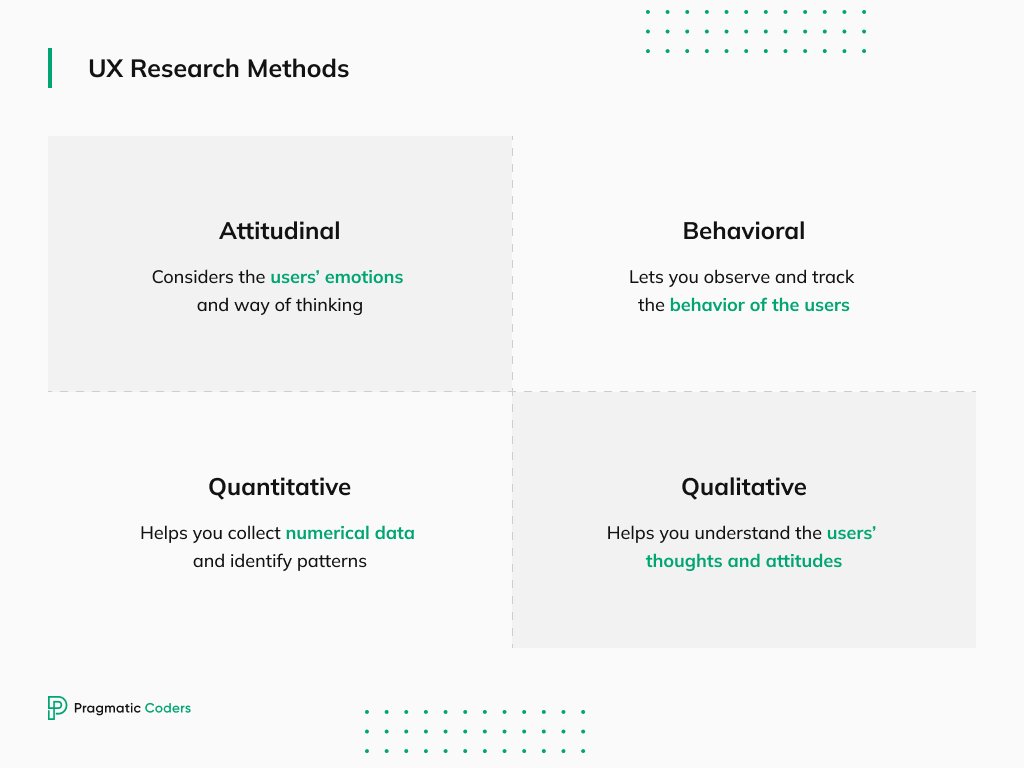
User interview – a method during which the researcher asks questions and listens to the subject’s responses to gain qualitative information directly from potential users.
Ethnography research – a method that involves observing and documenting the behavior of a group of people in their natural environment to gain insight into how they think, feel, and act while they interact with each other and their surroundings.
Usability testing – a method of testing that evaluates the user-friendliness and user experience of a digital product by testing it on potential users.
Surveys – a method of collecting data by asking questions and gathering responses from a group of people. They can be conducted online, by phone, or in person and can be tailored to gather specific information about a particular issue or target audience.
Card sorting – a method that helps you understand how people put information into categories, enabling you to arrange and structure content in a manner that is easy for users.
STEP 3. GATHER YOUR FINDINGS
After the UX research is complete, it’s time to analyze the results. Affinity diagrams are a good way of structuring the assembled data. You can also turn your findings into something more tangible, like user personas or user stories.
Affinity diagrams – a tool used to sort your data and group information according to common themes or characteristics, making it easier for you to understand how facts relate and interact.
User persona – a representation of a group of people that outlines their similar characteristics, behaviors, goals, and motivations.
User story – a short, simple description of a feature told from the perspective of the end user.
💡 How to conduct effective UX research [ BLOGPOST]
Solution discovery & definition. Find and validate your business idea
You know what your competition is up to and understand the struggles of your customer base. Now it’s time to use the knowledge to generate and prioritize potential solutions to the outlined problems and select the right one for prototyping and testing.
Solution discovery

In the solution discovery process, your team will come together to create a list of potential solutions that need to be prioritized. After the process is complete, you should have a wide variety of possible solutions ready for further evaluation and validation.
It’s important to recognize that the solution discovery process isn’t solely about uncovering an answer to a new issue. It can also include understanding how to improve existing solutions or leverage potential market opportunities.
When you study your competitors’ offers, you may find they have omitted certain aspects of their product which leads you to ask why they did not invest in these areas. This could be your opportunity to pinpoint where exactly it is that you fit in and excel!
Who participates in solution discovery?
Your solution discovery team should consist of:
- a UX team (UX researcher + UX designer),
- a product owner,
- a tech leader.
Solution discovery brainstorming methods
You can use a selection of methods when brainstorming the best solutions. Let’s discuss a few of them.
Impact Mapping is a framework for organizing and prioritizing ideas for solutions to user problems or business goals. It involves:
- identifying the problem,
- defining the group of people affected by it,
- naming the impacts that potential solutions could have on those people, and
- identifying the deliverables or solution ideas that could create those impacts.
In Impact Mapping, you analyze user research data to understand the problem and its effects on users. Then you generate ideas to address the problem in the most impactful and effective way to achieve the desired goal.
Opportunity Solution Tree is a method for creating solutions that focus on outcomes rather than impacts. You identify outcomes, opportunities, and solutions and then experiment to test whether the solutions make sense. This testing is done using the least expensive methods available, but more can be invested as you get closer to finding your solution.
Paper prototyping is an effective way to develop overviews of a digital product quickly. Sketching enables designers to visualize the solution ideas that the team has brainstormed and makes discussing those ideas easier. Allowing all team members to provide input helps quickly discard or refine ideas.
User interviews are essential to involve customers during the solution phase and understand what adjustments need to be made for a better user experience. When conducting user interviews, show potential customers a selection of mockups and observe their reactions to refine the solution idea. Present them with specific elements to see if they understand how those features would work.
Outcomes
I have found some nice solutions! 💪
Ideation is the process of generating potential solutions. In the best case, you will have several ideas that you can examine in more detail in the solution definition stage.
I have nothing 😭
If you cannot come up with any solutions, it may be because you have not considered all options, have limitations such as a limited budget, or have chosen the wrong problem. In these cases, it may be necessary to return to problem discovery or consider additional options.
However, finding no solutions can also be valuable, as it allows you to avoid wasting time and resources on unviable options.
💡 A Guide to the Solution Discovery Process for Startups
– Generating Solution Ideas [ BLOGPOST]
Solution definition

Before we lay out the solution definition process, let’s summarize the difference between solution discovery and solution definition.
Solution discovery – search for solutions that are possible to create.
Solution definition – figure out which of those solutions is worthy of being created.
How does it work?
The solution definition process involves narrowing down a pool of ideas by identifying common traits and validating them through testing methods such as prototypes or guerrilla research.
This process helps to refine and improve the solution ideas and may involve adjusting or changing the solution as you learn new information about the user and the problem.
The goal is to identify the best solution to the problem ultimately.
What metrics will show me if a solution is viable?
To determine the feasibility of a solution, metrics such as
- desirability,
- functionality, and
- profitability
can be measured.
Testing methods, including the “button to nowhere” method, first-click tests, tree testing, and A/B testing, can be used to assess these metrics. The goal is to determine whether the solution is worth investing in before proceeding with further development.
What tools should I use in the solution definition process?
You can use various tools and methods to test and validate ideas during the solution definition process.
At the early stage, paper or online tools such as post-it notes and online whiteboards can be used for testing with methods like card sorting or tree testing.
Wireframes and hi-fi mockups can help test the functionality and visual appeal of the solution, while prototypes provide a more realistic and interactive experience for users and stakeholders.
These tools and methods allow you to test and refine the solution to ensure it is clear, understandable, and valuable for users.
How can I validate my solution ideas?
Here is a summary of different methods that can be used for solution validation.
Button to nowhere – a way of gauging whether users are curious about a product or new features by monitoring their interaction with temporarily inaccessible interface components.
Card sorting – a research method that helps you understand how people put information into categories, enabling you to arrange and structure content in a manner that is easy for users.
Tree testing – a usability testing method used to evaluate the findability and navigational structure of a digital product.
First-click testing – a method that allows checking how intuitively or easily the user can interact with an interface to complete a task.
Usability tests – a method of testing that evaluates the user-friendliness and user experience of a digital product by testing it on potential users.
5-second tests – a way to evaluate the user’s first impression of a design which involves asking them to look at a webpage or screen for 5 seconds and then record what they remember about it.
Eye-tracking – a method that allows researchers to gain insights into how individuals interact with designs by measuring and observing where they direct their gaze.
A/B testing – a method of comparing two versions of a variable (such as a web page, email, or application) to determine which one performs better.
What will I get when the process ends?
This process will help you develop a detailed and clear vision of your solution, including the unique value proposition (UVP), product vision statement, and information architecture.
The UVP explains the unique benefits and pain points addressed by your solution, while the product vision statement defines the purpose and long-term goals of the product. The information architecture organizes and labels the content of the product to make it easily understandable for users.
These elements will be useful for building an MVP and for ongoing product development and strategy.
💡 How to validate your solution ideas as a startup founder
– The Solution Definition process explained [BLOGPOST]
Outcomes. Plan the future of your startup and raise money
Now you understand the market and have a solution to your audience’s problem. What’s next?
Firstly, you need to understand the revenue and cost structure to outline how your startup expects to make an income and capture value.
Secondly, you should figure out how to secure funding from investors and plan your startup’s development.
Lean Canvas – a startup business plan
How to fill in Lean Canvas?
This one-page business plan can be filled in using a printed template, sticky notes on a whiteboard, or digital tools like Miro. There are no strict rules for the order in which the blocks should be completed, but a common method is to follow the order presented in the template.
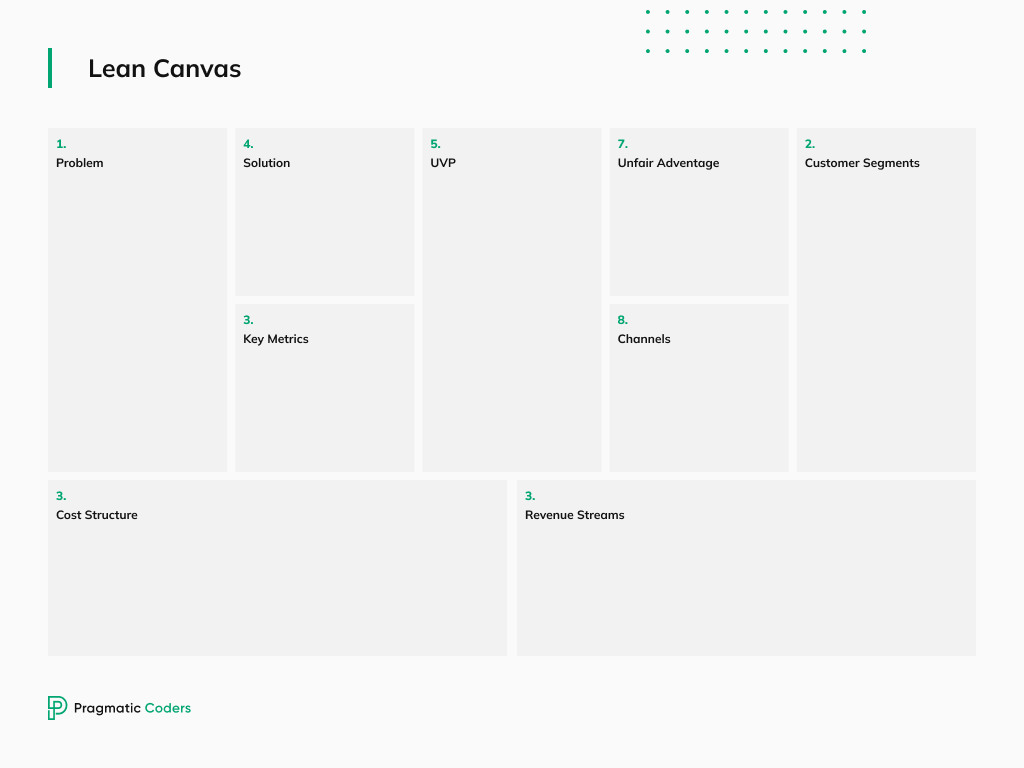
1. PROBLEM
Identify the specific issues you want to address and put yourself in the shoes of your customers to understand their challenges.
2. CUSTOMER SEGMENTS
Define your target audience and (create separate Lean Canvases for different customer segments if necessary).
3. KEY METRICS
Define key performance indicators and monitor how new customers are using and reacting to the product.
4. SOLUTION
Describe the solution the product will offer to address customer pain points and challenges.
5. UVP
Define what sets the product apart from competitors and why customers should choose it over other options.
6. UNFAIR ADVANTAGE
Identify something that competitors can’t easily copy or buy.
7. CHANNELS
Outline the means by which your startup will reach and communicate with customers.
8. REVENUE STREAMS
Describe how your startup will make money.
9. COST STRUCTURE
Outline the costs associated with running the business, including both fixed and variable costs.
By filling in each of these blocks, a small business can shape and refine its ideas and plan for its product’s future growth and development.
💡 How to Create Lean Canvas for Your Startup [BLOGPOST]
Business model

Let’s start our discussion by naming the difference between two closely related terms: business model and business plan.
A business model is not a business plan.
A business model outlines how a company plans to generate revenue and make a profit. It describes the value the company offers to its customers and how it will deliver that value.
A business plan, on the other hand, is a more detailed document that outlines the steps and strategies a company will take to achieve its goals. It includes information about the target market, the products or services offered, the marketing and sales strategy, and the management team. A business plan also typically includes financial projections, such as a profit and loss statement and a cash flow forecast.
How can I create a business model for my startup?
STEP 1. Basic revenue model
Start by setting up a revenue model for your startup, that is, by defining how you will generate income.
There are various revenue models that businesses can use, for example:
- The marketplace model – a startup builds a platform that connects buyers and sellers. This model can take various forms, including horizontal marketplaces, which cater to a broad audience with various product categories (such as Amazon), and vertical marketplaces, which focus on a specific, often niche market sector (such as Etsy).
- The subscription model – customers pay a recurring fee for access to a product or service.
- The freemium model – a basic product is offered for free, but users must pay for additional premium features.
- The commission model – where a business receives a commission from each transaction.
- The affiliate model – where a subject (affiliate) earns a commission for referring customers or traffic to another company’s website.
- The on-demand model – where a service is provided to customers on demand, typically for a fee.
STEP 2. Total revenue model
The total revenue model will help you assess how much revenue your startup can generate. It includes both its primary revenue stream (obtained through its chosen business model) and any additional revenue streams (also known as peripheral income).
These additional revenue streams can come from sources such as paid ads or one-time payments within the product.
To calculate total revenue, you must add all of these income sources. A startup must consider all potential sources of revenue when developing its financial plan to maximize its profitability.
STEP 3. COST STRUCTURE
The cost structure refers to the expenses a business incurs to operate and generate revenue. It includes both fixed costs, which remain constant regardless of the level of business activity, and variable costs, which vary based on the level of business activity.
To calculate the cost structure, a business must consider various expenses, for example:
- product development,
- marketing and sales efforts,
- salaries, recruitment,
- maintenance,
- infrastructure (such as office space),
- operating costs,
- management fees,
- customer acquisition costs, and
- customer retention costs.
STEP 4. PROFIT STRUCTURE
We’ve talked about how your startup is going to spend money. Now let’s discuss how it’s going to earn. Subtract your costs from your revenue to see if the initial assumptions about your business were accurate and if the company can be profitable.
STEP 5. GROWTH MODEL
The final step in developing a business plan is creating a growth model, which outlines how a startup plans to grow over time. It can be helpful to create an Excel table with predictions for the next 24 months.
When creating a growth model, it is essential to consider how various actions will interact with each other and how they will impact the business. For example, investing in acquiring new customers will likely generate additional costs, such as the cost of hiring new team members to support the increased business.
💡 How to create a business model for a startup [BLOGPOST]
Pitch deck

At this point, you have gathered all the information about your startup needed to start promoting it among venture capitalists and angel investors. So how do you craft a perfect pitch deck? Keep reading to check what slides should go into your deck.
Vision and value proposition
Present your product and explain why it is unique and valuable.
Problem
Describe the problem your product aims to solve, who it affects, and why it is important to address it. You can also mention how your competitors fail to solve the problem.
Solution
Outline your solution to the problem described in the previous slide, and show how potential customers will use it. You can include details about your MVP, prototype, or features to demonstrate that you have a clear development plan.
Target market, opportunities, and trends
Explain who your ideal customer is and discuss the market opportunities and trends that your product will take advantage of. Prove to investors you’ve carried out a decent market analysis by showing your total market value and the percentage of the market you aim to reach.
Business model and financials
Clarify how you plan to make money with your product and present your financial projections.
Traction
Discuss any progress or achievements you have made so far, and share any positive feedback or testimonials you have received. If you don’t have any of these, you can present your milestones and plans for attracting your target customers.
Marketing and sales strategy
Outline your sales and marketing plan, including your strategy for reaching your target audience, your marketing channels, and your sales forecasts.
Team
Introduce the team behind your product and explain why they are the right people to bring it to market.
Competition
Discuss your competitors and explain how your product is differentiated from other products in the market.
Use of funding
Finally, ask for funding. Explain to angel investors, venture capitalists, or whoever you’re presenting the pitch to how you’re going to distribute the financial support. If you have already managed to get buy-in from other venture capital investors, mention them here.
What to attach to your pitch deck?
In addition to the presentation deck, venture capitalists and angel investors may also request to see additional documents related to your project, such as a business plan, technical documentation, target market research, and an Excel sheet with the market and financial calculations.
These materials give investors a deeper understanding of your project and help them assess whether it is worthwhile.
💡 How to create a pitch deck [BLOGPOST]
MVP roadmap

An MVP roadmap is a crucial tool for any startup, as it helps to guide the development of a minimum viable product and ensure that the product meets the target market’s needs. What should it include?
- Product vision – the long-term strategic direction and desired outcome of the product development efforts.
- Timeline – the order of actions needed to achieve the product vision and goals.
- Initiatives – the significant efforts or activities undertaken to achieve the desired outcome.
- Milestones – the achievement of important steps or events in the development process that signifies the completion of one phase and the start of another.
- Outcomes – the changes in user behavior or the goals to be achieved in order to generate business value or enhance the product.
💡 How to create an MVP roadmap for my startup? [BLOGPOST]
How to start a startup. FAQ
How much money do you need to launch a startup?
The amount of money needed to launch a startup can vary significantly depending on the specific business, industry, and software suppliers. For example, the average budget of our clients ranges from $120,000 to $250,000, and that’s enough to build a minimum viable product (MVP).
What’s the most popular business structure for startups?
The most popular business structure for startup companies is typically the limited liability company (LLC). LLCs offer startup founders flexibility and limited personal liability. They are relatively straightforward to set up and require minimal ongoing formalities. LLCs also offer more favorable tax treatment compared to other business structures such as C Corporations or S Corporations.
Summary
That’s it! We hope the article will have a significant impact on your business success.
Are you still looking for:
- A more detailed explanation of the startup-building process,
- Protips for everyone starting a new business,
- Insights from industry professionals,
- Calculation examples to help you turn theory into practice,
- Infographics to better understand what starting a startup business looks like?
Then be sure to download the How to start a startup ebook!



